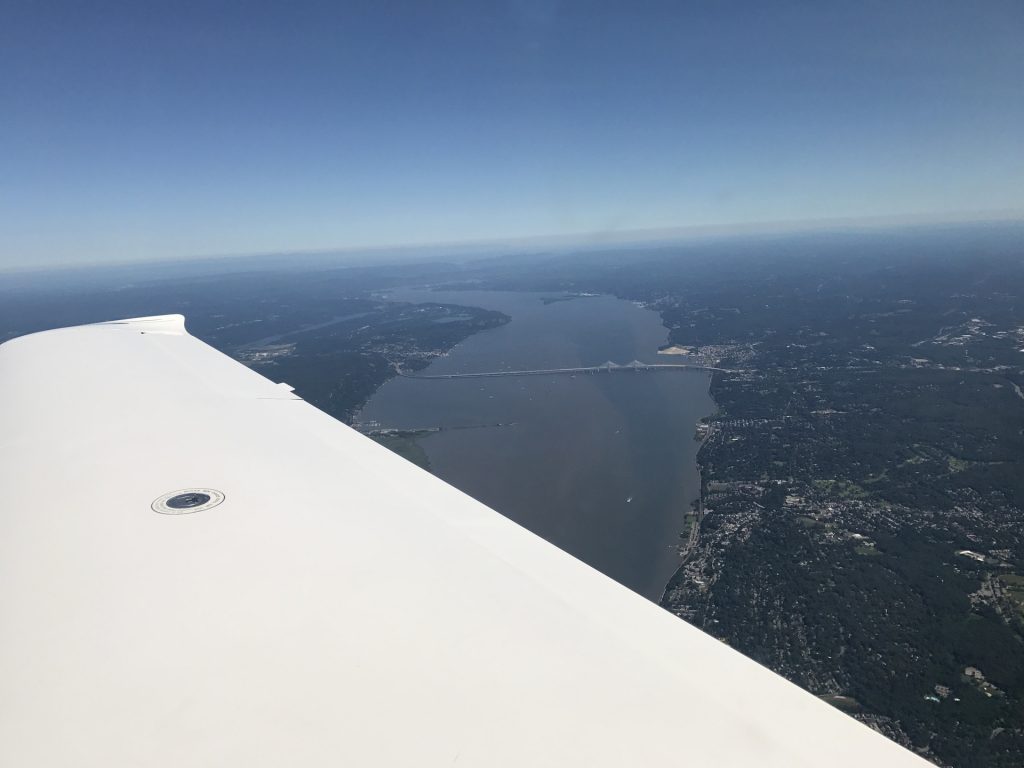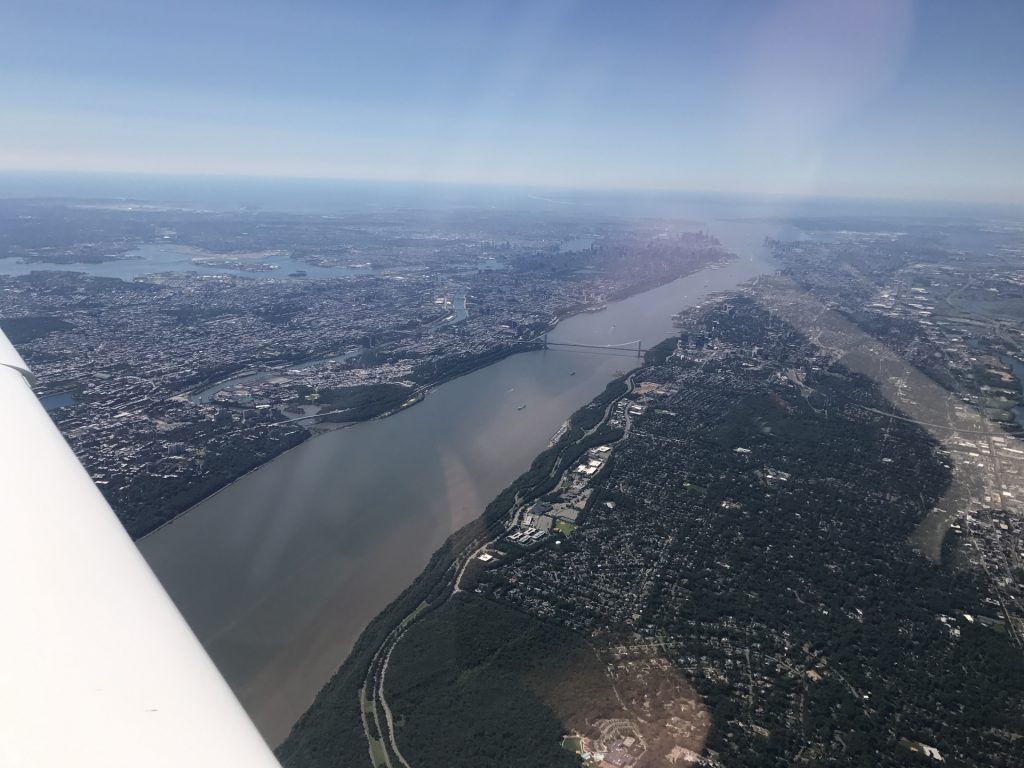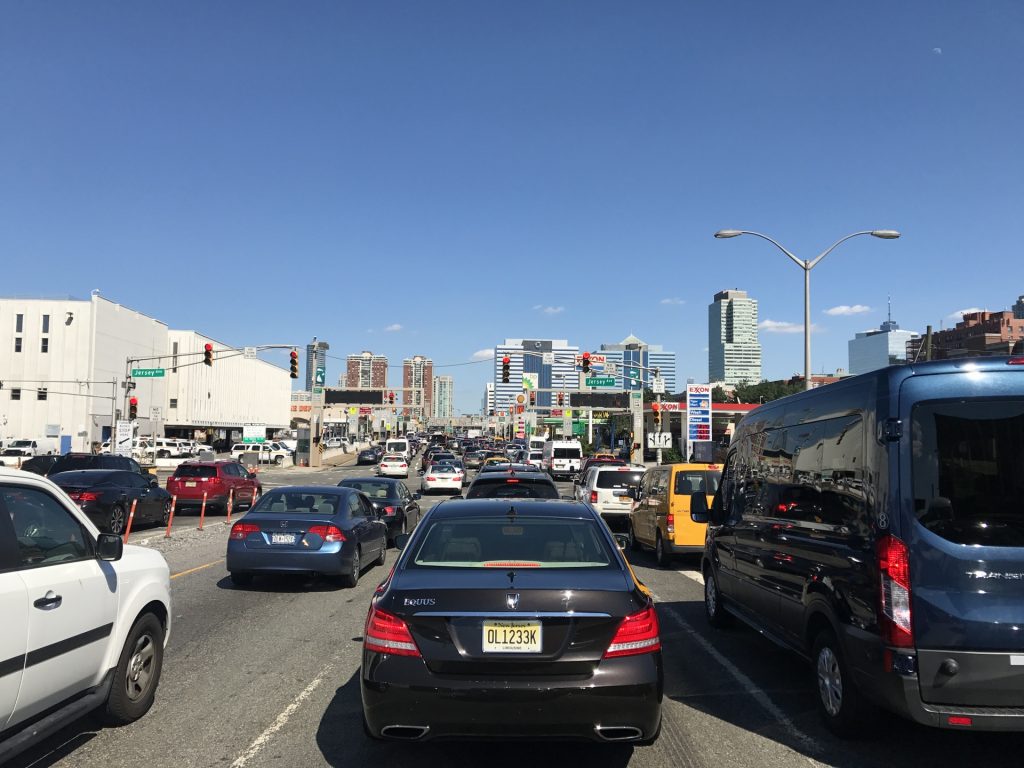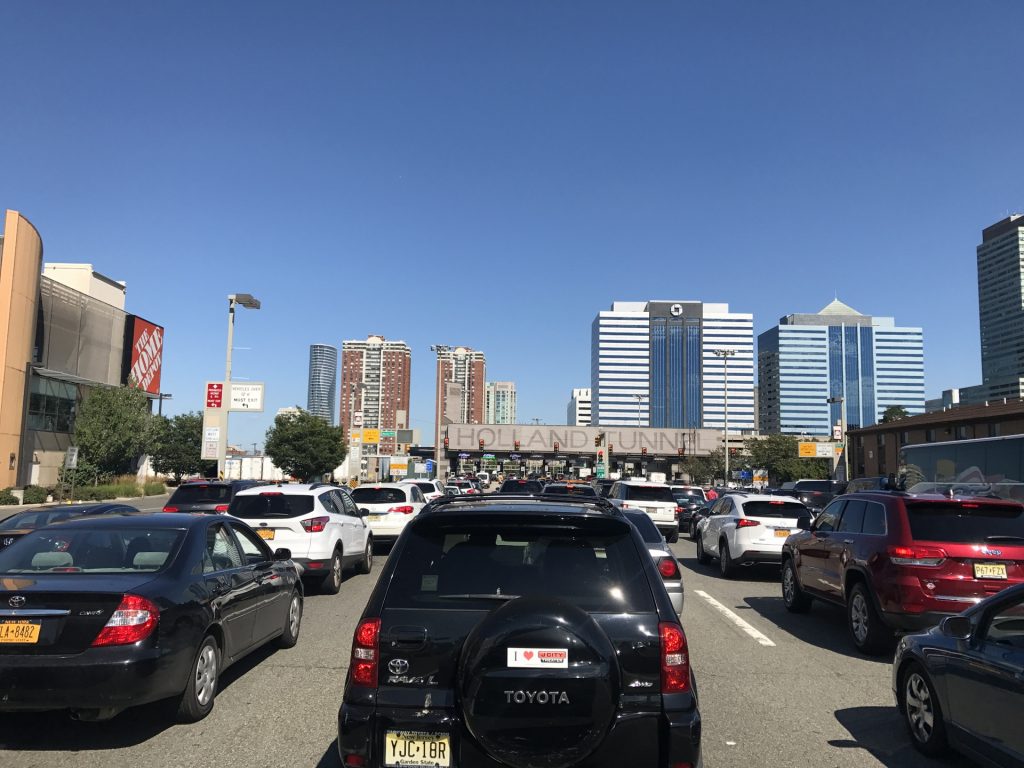New York and Moscow metro areas have populations that are on a similar scale (20 million for NY; 16 million for Moscow) and both have a lot of diversity in terms of ethnicity, culture, and religion. I recently completed my first visit to New York after returning from Moscow. Here are some things that struck me…
Flying down in the Cirrus SR20 (20 mpg!) took me over the Tappan Zee Bridge, currently being replaced by a new bridge that, after adjusting for inflation, will cost 5X the 1950s price for the original bridge and, with 60 years of improved technology and techniques, take longer to construct.
Driving into Manhattan from the New Jersey suburbs took more than 2 hours on a Sunday afternoon:
Traffic is so bad that Facebook has a “place” called “Holland Tunnel Traffic jam” and, after checking in there with a status update, Facebook asked me “Would you recommend this place?”
The 9-year-old in the back of this minivan said, during the traffic jam, that she doesn’t want more immigrants to come and share her roads (. However, she was opposed to a wall along the Mexican border because she loves tacos.
We had stopped for gasoline in Elizabeth, New Jersey. It didn’t look as though anyone in the neighborhood had a W-2 job and the gas station convenience store clerk was in a bulletproof plastic box (to get rung up you placed your purchases in a turnstile; the clerk scanned them and then put the bagged items back into the turnstile).
Once we were riding in the car in Manhattan, we were bumped by potholes and plates every few seconds, a completely different experience than the perfectly smooth roads of Moscow (though in the pre-Putin 1990s apparently things got to a comparable level of decay over there).
Midtown Manhattan was crazily packed to the point where it was often challenging to find space on the sidewalk. Moscow is populous but it is more spread out and with fewer high-rises so it never feels anywhere near as crowded in any one spot. Our 9-year-old friend was excited about taking the subway so we descended into a 100-degree station to wait for about 10 minute. Then we got into a 90-degree subway car whose air conditioning was broken. An Upper West Sider who travels a lot said “New York has become Bangladesh, basically.” (the Moscow subway runs at one-minute (weekdays) or two-minute (weekends) intervals; see previous posting)
After Moscow, one of the most striking things about New York is how filthy it is. The curbs are lined with cup-sized trash. The sidewalks are dotted with cigarette-butt-sized trash.
Some of the streets in New York had so many homeless guys sitting and waiting that it looked as though a Hollywood team had been asked to prepare a scene of what it would look like after 90 percent of a city’s housing had been destroyed by a natural disaster or war.
After the debacle of trying to drive in from the suburbs we decide to escape via New Jersey Transit. The commuter rail runs only once per hour during mid-day (compare to every 15 minutes in Moscow) and therefore the service is barely used. We were the only passengers on a brand new car ($1.82 million) with about 150 seats, i.e., 1.3 percent occupancy. At $15 per person for the fare it is going to take a long time to pay off that Bombardier-built car! (New Jersey’s main fiscal problem seems to be unfunded pension liabilities.)
We had breakfast with a New Jersey resident whose live-in girlfriend is pressing him to get married and have children. About half of his peers who went down this road have lost houses, children, and future income via divorce lawsuits so he is planning to move away from New Jersey family law and into Nevada (50/50 shared parenting, capped child support, and limited alimony reduce the incentive for a lower-income spouse to end the marriage with a divorce lawsuit).
We stopped in Connecticut to see cousins. At the airport we met a police officer who complained that the unions had allowed the state to skip making pension contributions and then, years later, when the yawning gap between assets and liabilities became too big to ignore, government workers would be forced to make concessions. He was equally angry with the union bosses and the politicians. (despite these concessions, Connecticut is still having budget problems)




>Tappan Zee Bridge, currently being replaced
>by a new bridge that, after adjusting for
>inflation, will cost 5X the 1950s price for
>the original bridge and, with 60 years of
>improved technology and techniques,
>take longer to construct.
Will the replacement structure be comparable to the original? If not, is the 5X cost comparison adjusted for any differences between the two structures?
Neal: The replacement is way better. The old bridge, which lasted for 62 years, only got people from one side of the Hudson River to the other.
(Note that having a span there at all is an artifact of bureaucratic conflict. See https://en.wikipedia.org/wiki/Tappan_Zee_Bridge for “The site of the bridge, at the Hudson River’s second-widest point, added to construction costs. The site was chosen to be as close as possible to New York City, while staying out of the 25-mile (40 km) range of the Port Authority’s influence, thus ensuring that revenue from collected tolls would go to the newly created New York State Thruway Authority, and not the Port Authority”)
philg: Ha Ha. Off the top of my head, some of the factors which might vary between the two bridges and significantly affect cost include length, number of lanes, height, design lifetime, reduced seismic risk, aesthetics, improved employee health/safety during construction, and better consideration/mitigation of environmental impacts. Does the 5X cost comparison in the posting take any of these factors into account? Also, If the old structure will be demolished, then that cost should also be excluded from the comparison.
The original bay bridge took 3 years to build. Rebuilding the eastern span took 11 years. It’s profound evidence of how progress doesn’t happen automatically.
While in NYC did visit Penn Station? It is the busiest passenger transportation facility in the Western Hemisphere (600k rail passengers/day), yet is a total dump overrun with homeless. Instead of fixing it however, the NYC councilman for that district, Corey Johnson, is working on city bylaws that would force The Donald to release his federal returns.
I haven’t been to NYC in a long time (I think I visited in 1996, 1998, and 1999, and IIRC in 1978 as a young child). I have mixed feelings about the place. I liked the mix of cultures and some of the sights, but it seemed quality of life was not that good at that time. It was a bit too gritty and seeing the state of the homeless there was shocking to say the least. Also the people there just seemed to rub me the wrong way. I liked Boston much better – it felt safer and not as rushed. When visiting NYC I would stay at the house of my friend’s parents in New Jersey. Father was a Wall street stock broker if I remember. Two things surprised me: 1) all the New Jersey salary men working for banks that took buses to work in the morning and back. It was an hour long slog in both directions and that seemed pretty bleak way to live 2) New Jersey has some areas that are really beautiful if you are rich (I remember the house was in some mountainous area, which a nice view, looking like the appalachia). I compare this to the area around Rutgers University which is a sh^t hole, including Rutgers.
btw interesting documentary about the uber-rich “Avenues” high school across from the public housing projects near the High Line in NYC. I’m sure the rich folk who moved in were not Trump supporters, yet they discriminate against their poor neighbors. All those bleeding hearts and not a finger lifted to offer some slots to the kids next door:
God you folks are cheerful today.
After having lived in Japan and traveled a bit in Asia and Europe via train/plane, I was shocked at the condition of the airport and the trains (T-line) in Boston, by comparison. Dingy and awful.